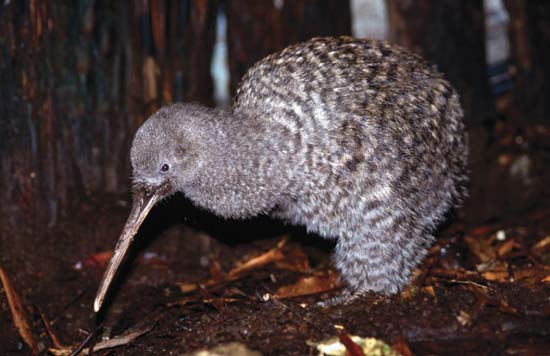
Apteryx owenii
TAXONOMY
Apteryx owenii Gould, 1847, New Zealand.
OTHER COMMON NAMES
English: Little gray kiwi; French: Kiwi d’Owen; German:
Zwergkiwi; Spanish: Kiwi Moteado Menor.
PHYSICAL CHARACTERISTICS
Length 13.8–17.7 in (35–45 cm); males 2–2.9 lb (0.9–1.3 kg),
females 2.2–4.2 lb (1.0–1.9 kg). Medium-sized, flightless, nocturnal
bird with pale-mottled, gray, shaggy plumage. The body
is pear-shaped with a long neck and bill.
DISTRIBUTION
Surviving on only four islands: Kapati, Red Mercury, Hen, and
Long.
HABITAT
Evergreen, broadleaf forest and margins of forest up to 3,000
ft (1,000 m) with over 40 in (100 cm) annual rainfall. Favors
wet forest, with rotten logs and dense undergrowth.
BEHAVIOR
Nocturnal, pairs hold territories of about 10 acres (4 ha). Pair
formation in second year and maintained for life. Chases
occur in defense of territory, but most displays are vocal, using
high-pitched whistles that have distinct male and female
versions.
FEEDING ECOLOGY AND DIET
Omnivorous, but eats mostly soil and litter invertebrates, such
as earthworms, millipedes, larval beetles, as well as moths,
crickets, and spiders, supplemented with some fruit.
REPRODUCTIVE BIOLOGY
Nest in burrows dug by the pair. Sometimes there is no nest
material, but in other burrows some leaves and twigs have
been gathered. Most clutches are composed of one egg, but
about 15% have two. Only the male incubates, sitting for
63–76 days. The chick is tended (probably fed) for about four
weeks after it hatches. Unlike the brown kiwi, the chick of the
little spotted kiwi may stay in the nest for two to three weeks
before emerging.
CONSERVATION STATUS
Endangered with a total population of about 1,000 individuals.
Even on its island sanctuaries it suffers predation on its eggs
from native rails (wekas) and rats.
SIGNIFICANCE TO HUMANS
None known.
Photo Gallery of - Little spotted kiwi
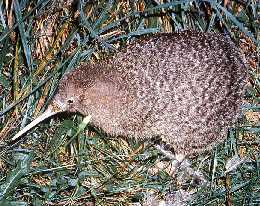
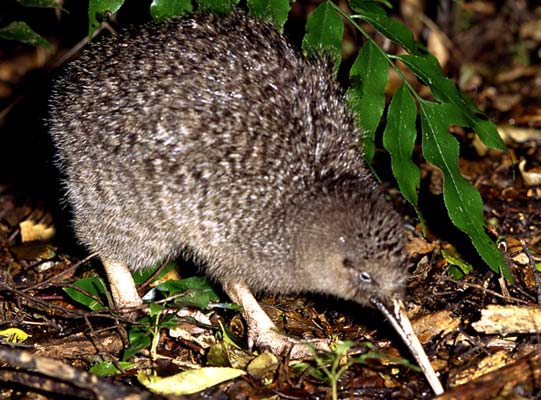
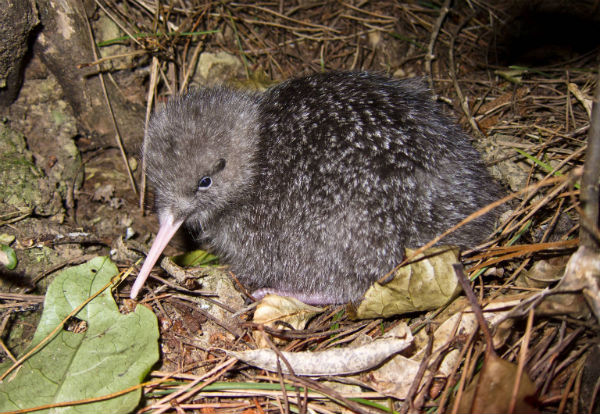
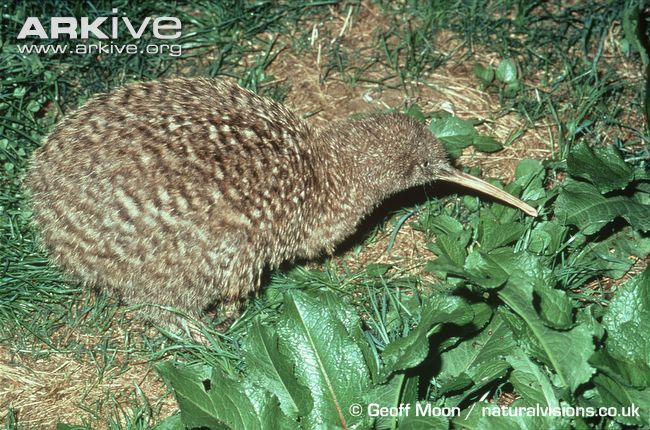
 Animalia Life
Animalia Life